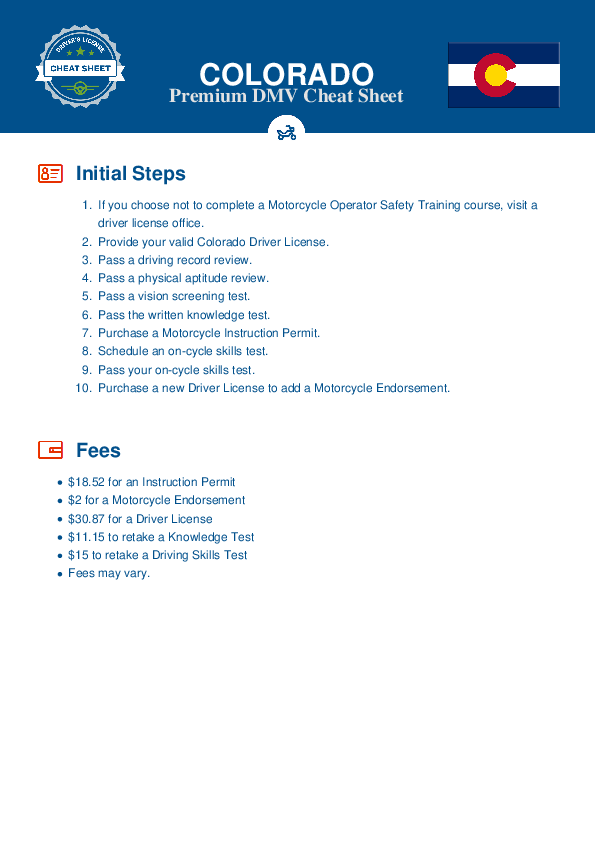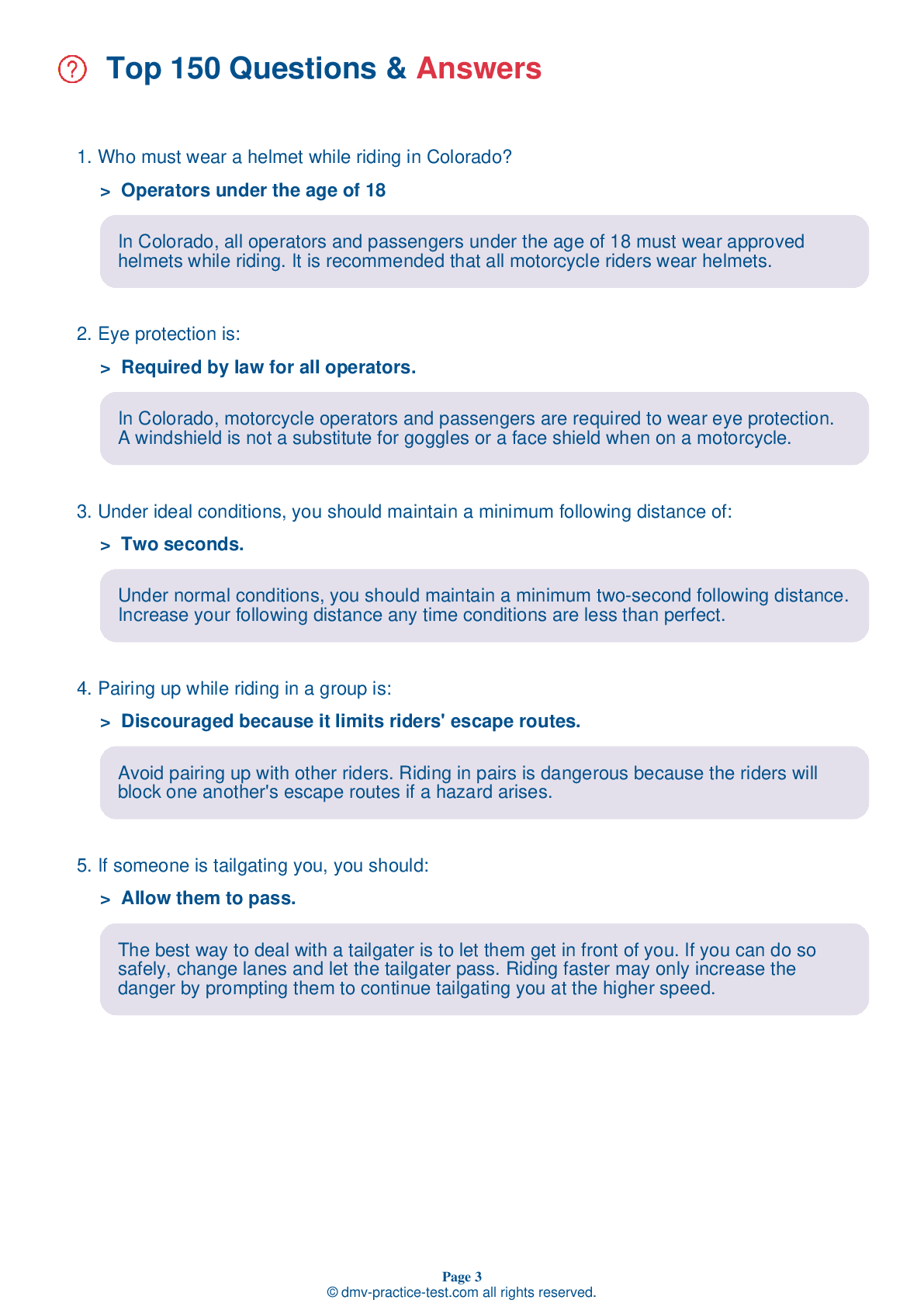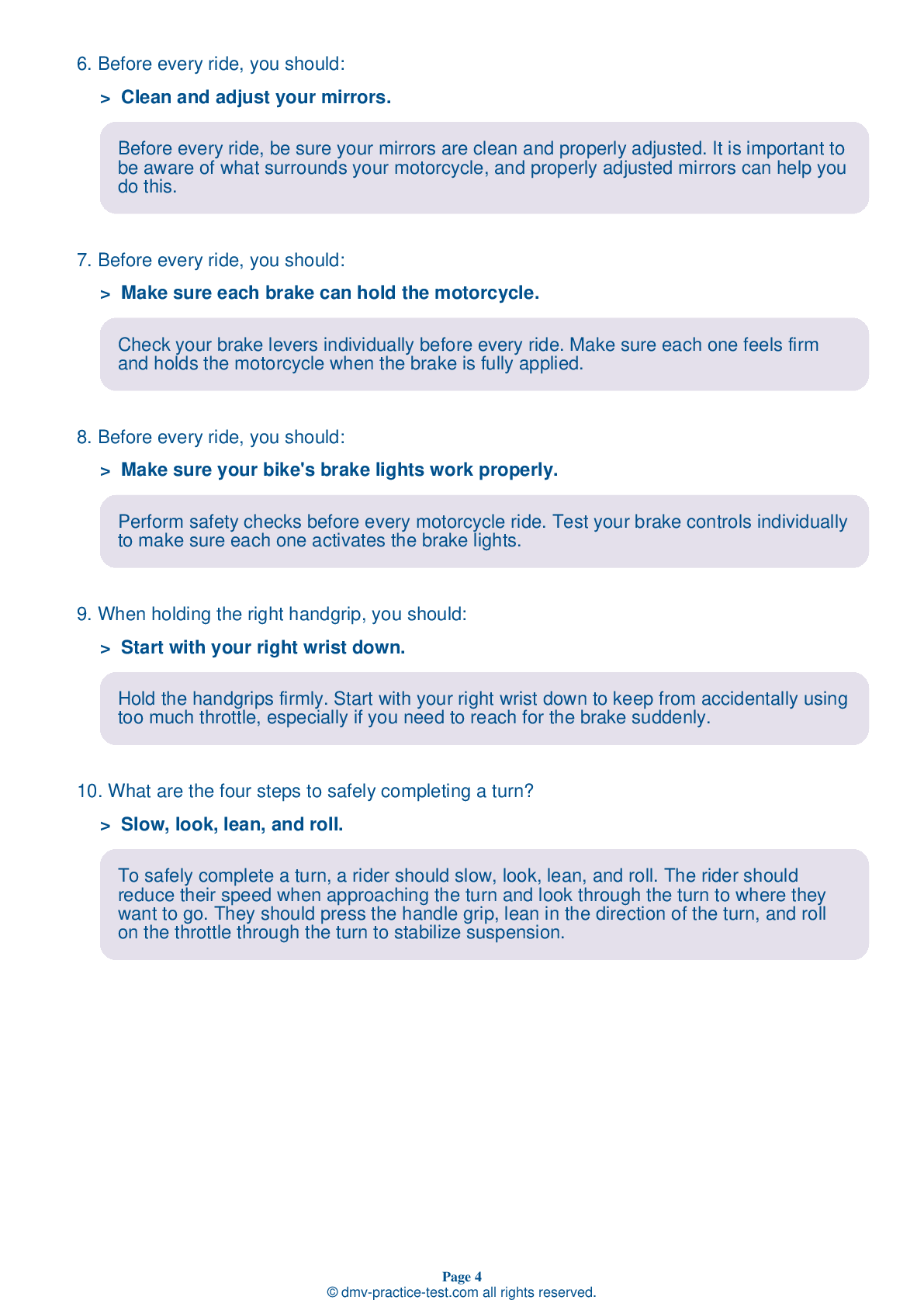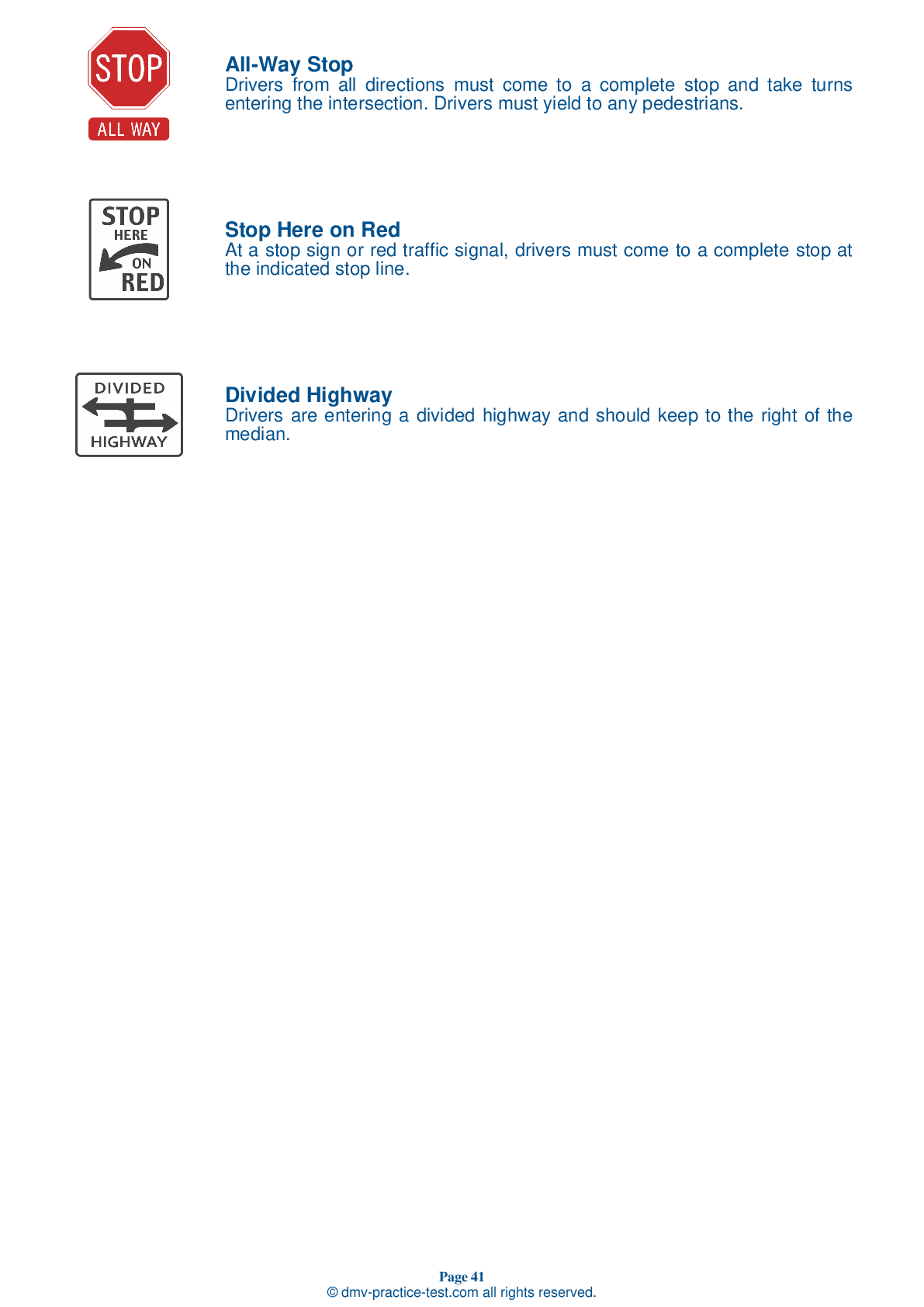Motorcycle Test | License CO 2025 | FREE Online Practice! #8
Take this FREE motorcycle test (license in CO 2025) to check your knowledge of the road rules. To improve your results, download a motorcycle handbook online, study theory, and practice for free on our website. Still worried about how to get a motorcycle license in Colorado in 2025? Check our website for more sample tests, train as much as possible, and boost your grades!
1 . When holding the right handgrip, you should:
Hold the handgrips firmly. Start with your right wrist down to keep from accidentally using too much throttle, especially if you need to reach for the brake suddenly.
2 . If you lock the rear tire on a good traction surface, you should:
If you accidentally lock the rear brake on a good traction surface, you can keep it locked until you have completely stopped. You should still be able to steer your motorcycle with a locked rear wheel.
3 . A properly-fitted motorcycle:
If your motorcycle fits you properly, your feet should be able to reach the ground while you are seated. When riding your motorcycle, keep your feet firmly on the footrests.
4 . A plastic, shatter-resistant face shield protects the wearer from:
In addition to protecting your face from injury in a crash, a face shield protects you from wind, dust, dirt, rain, insects, and pebbles thrown up from surrounding vehicles.
5 . While braking a motorcycle with a sidecar, you may need to:
A sidecar adds additional weight to one side of your motorcycle. You may need to steer slightly in the direction of the sidecar when applying your motorcycle's brakes if the sidecar is not also equipped with brakes.
6 . If you cannot see through the vehicle ahead of you, your following distance should be a minimum of:
An expanded cushion of space is needed if your motorcycle will take longer than normal to stop. If the pavement is slippery, if you cannot see through the vehicle ahead of you, or if traffic is heavy and another driver may try to squeeze in front of you, open up to a minimum three-second following distance.
See the exact questions that will be on the 2025 Colorado DMV exam.
99.2% of people who use the cheat sheet pass the FIRST TIME
Jeneen was tired of paying $5/gallon. She got herself a scooter that required the motorcycle license. She studyed the motorcycle test cheat sheet and passed her test the next day!
Christopher tells us how he knew nothing prior to obtaining the motorcycle study guide, and he only got one question wrong because he clicked on the wrong answer by mistake.



